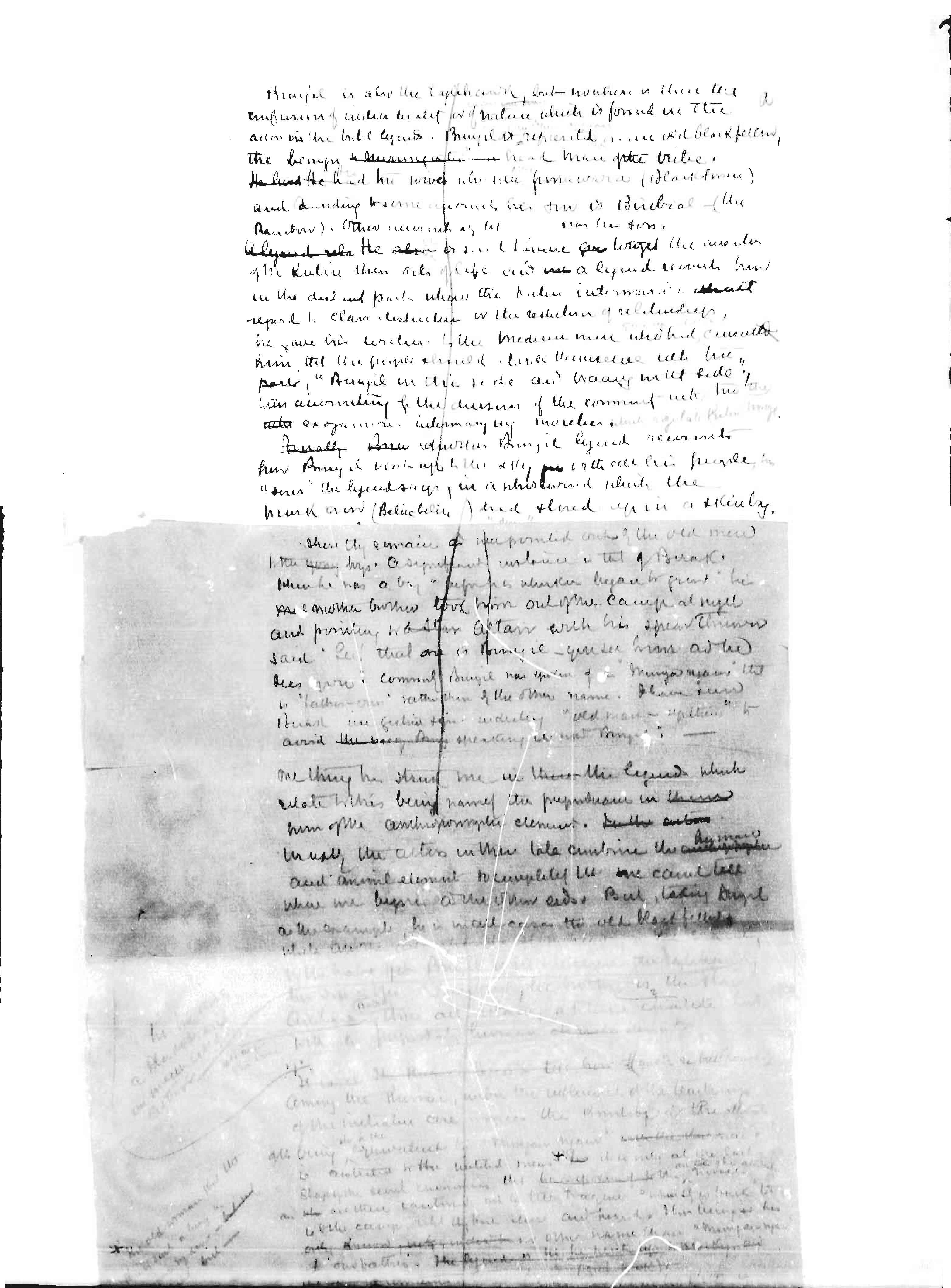Beliefs

Transcription - Page 1
Bunjil is also the Eaglehawk, but - nowhere is there that
confusion of individuality or of nature which is found in the
actors in the tribal legends. Bunjil is represented as an old blackfellow,
the benign ["Nurungaeta" -crossed out] head man of the tribe.
[He lived He had -crossed out] His two wives who were Gunawara (Black Swan)
and according to some accounts his son is Binbial -(the
Rainbow). Other accounts say that was his son.
[A legend rela- crossed out] He [also -crossed out] is said to have [given - crossed out] taught the members
of the Kulin their arts of life and [one - crossed out] a legend reveals how
in the distant past when the Kulin intermarried without
regard to class distinction or the restriction of relationships,
he gave his evidence to the medicine men who had gone up to him, consulted
him that the people should divide themselves into two
parts, "Bunjil on this side and Waang was that side".,
Thus accounting for the divisions of the community into two
exogamous intermarrying moieties which regulate Kulin marriage.
[Finally Boru- crossed out] Another Bunjil legend recounts
how Bunjil went up to the sky with all his people,
"sons" the legend says, in a whirlwind which the
Musk Crow (Belin belin) had stored up in a skin bag.
There they remain and were pointed out by the old men
to the [young- crossed out] boys. A significant instance is that of Berak.
When he was a boy "before his whiskers began to grow" his
mother's brother took him out of the camp at night
and pointing to [a star - crossed out] a star with his spear thrower
said "See! that one is Bunjil - you see him and he
sees you." Commonly Bunjil was spoken of as "Minya ngain" that
is "father-our" rather than by the other name. I have seen
Berak use gesture signs indicating "old man - up there" to
avoid [the using Bunj- crossed out] speaking the word Bunjil; -
One thing has struck me in [these-crossed out] the legends which
relate to this being namely the preponderance in [them- crossed out]
him of the anthropomorphic element. [In the custom -crossed out]
Usually the actors in these tales combine the human [anthropomorphic- crossed out]
and animal element so completely that one cannot tell
where one begins and the other ends. But taking Bunjil
as the example, he is in all cases the old blackfellow
[the rest of the page is faded and difficult to read]
[left margin notes too faded to be able to transcribe]
Document Details
